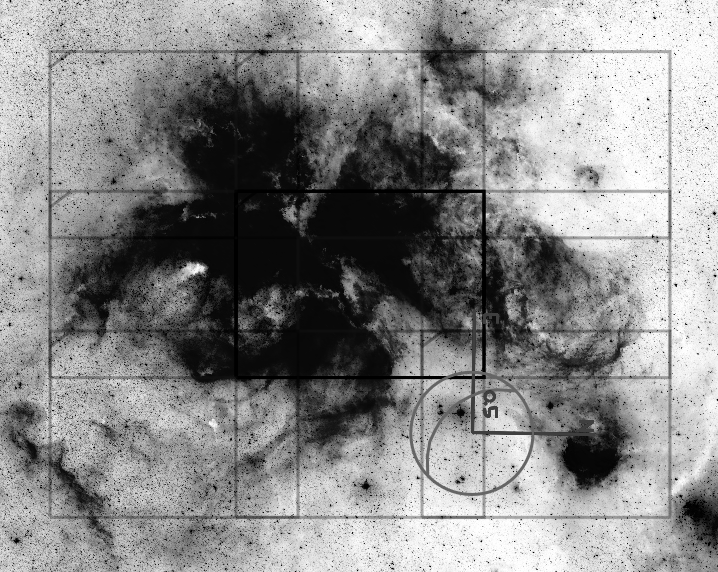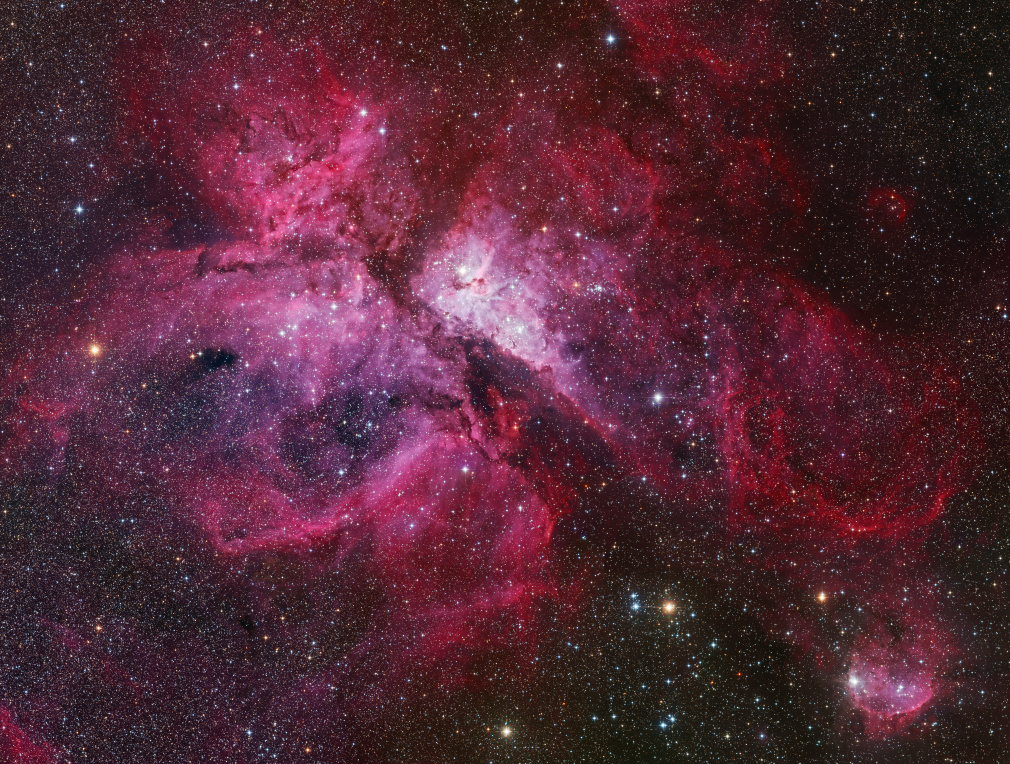Having a mid-large size telescope has its advantages like higher resolution which means more details in images (if not limited by atmospheric seeing), and more light collected, but it has some disadvantages too. One of the most obvious ones is the smaller field of view. To overcome this limitation, one can image multiple sky regions right next to each other, and stitch those images together as a mosaic. It sounds simple, but a two panel mosaic requires twice the time needed for a single-panel image, if the goal is to keep good SNR and small details at the same time. Also to get a nice color picture, each panel has to be imaged with 4 different filters (LRGB) if using a mono camera. A lot of clear skies is needed for this. Climate of Namibia is almost perfect for such projects, because in the dry season one can expect perfect weather for several days or even weeks.
 This year I decided to challenge Namibian weather, and planned a mega-project: a nine-panel (3 by 3) mosaic of The Eta-Carinae Nebula, using LRGB filter set. This is 36 stacks of images to capture and process, the plan of the mosaic with the overlapping panels is shown on the right, it was created using csillagtura.ro's photo planner. I was a bit conservative with total integration time, just to make sure I can finish the project no matter what, and luckily everything went according to my plan. I finished capturing in 6 consecutive nights. The result is a 93.5 megapixel image covering 2.5°x1.75° field of view. Click on the large picture to view the image in full resolution.
This year I decided to challenge Namibian weather, and planned a mega-project: a nine-panel (3 by 3) mosaic of The Eta-Carinae Nebula, using LRGB filter set. This is 36 stacks of images to capture and process, the plan of the mosaic with the overlapping panels is shown on the right, it was created using csillagtura.ro's photo planner. I was a bit conservative with total integration time, just to make sure I can finish the project no matter what, and luckily everything went according to my plan. I finished capturing in 6 consecutive nights. The result is a 93.5 megapixel image covering 2.5°x1.75° field of view. Click on the large picture to view the image in full resolution.
I already imaged two parts of this region in the past: The Eta Carinae Nebula in 2014 and The Gabriela Mistral Nebula in 2018. Detailed description of these objects can be found by clicking the links.
